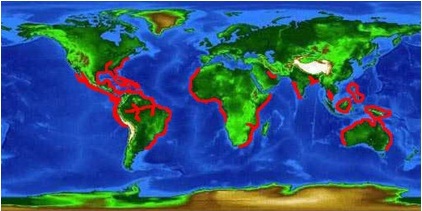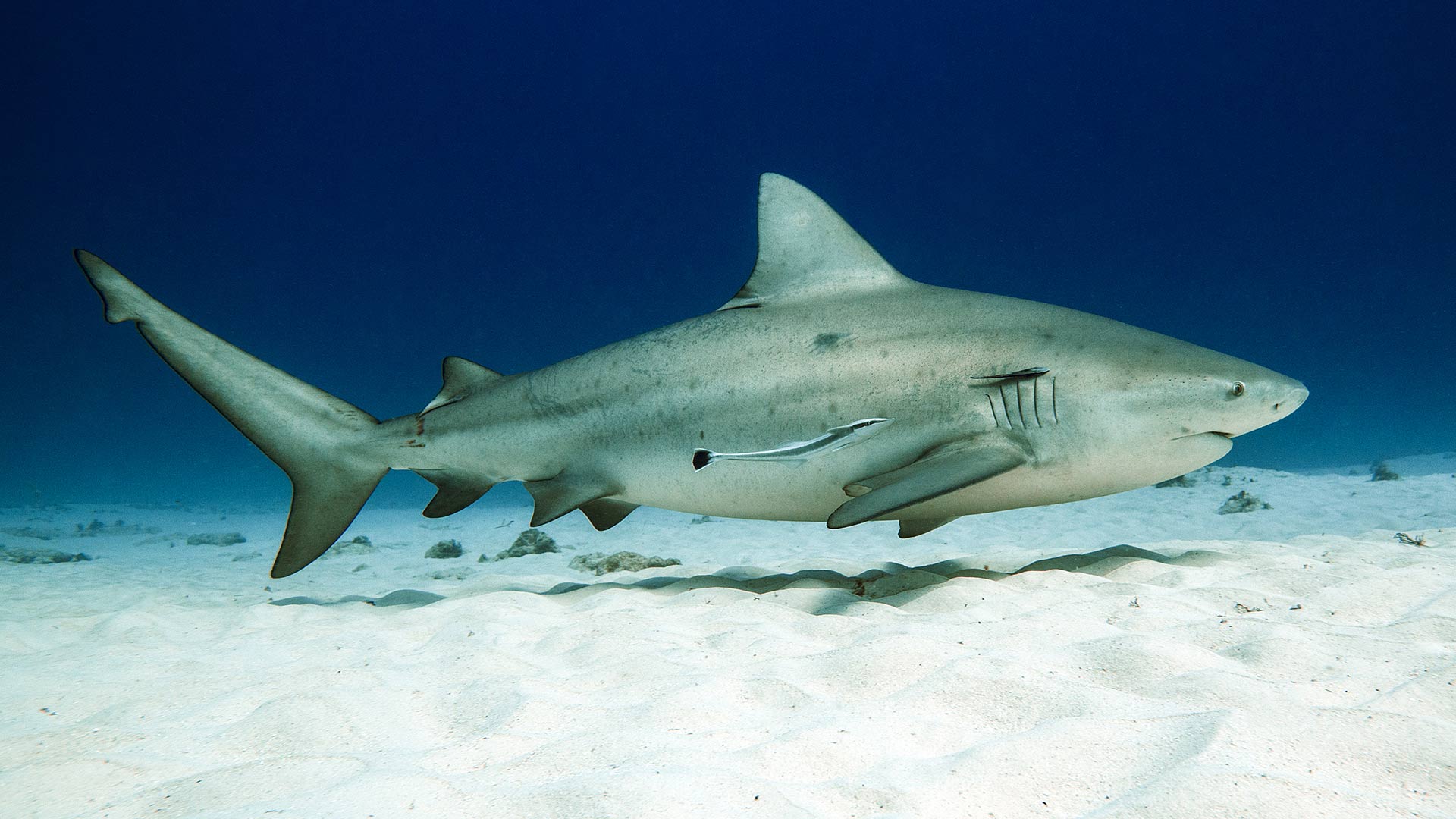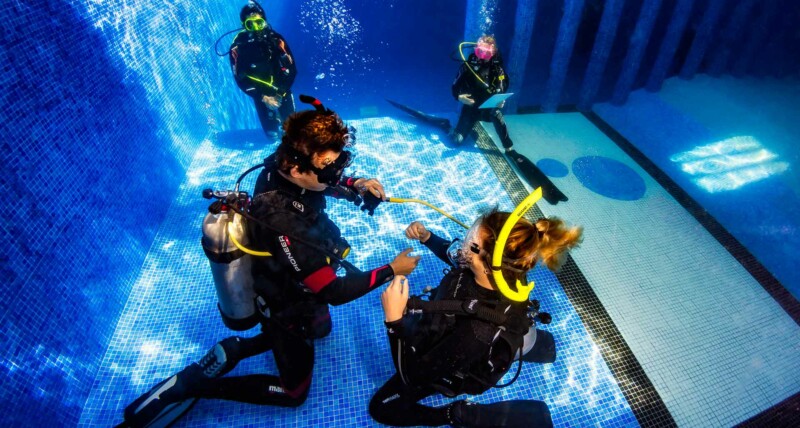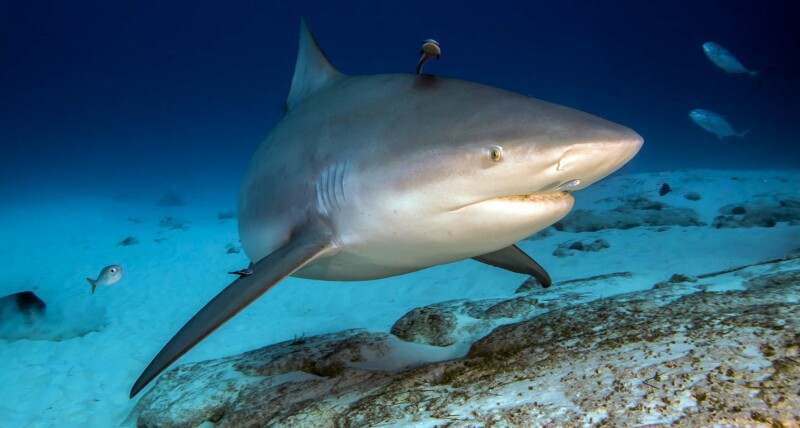The bull shark is a member of the Requiem Shark family, which includes around 50 species worldwide and 20 species in North America plus 4 species confined to Mexican waters. The species within this family resemble one another closely, so in some cases it is difficult to identify them .
The bull shark gets its name from its stout appearance and pugnacious reputation. It is known by many different common names throughout its range including Zambezi shark (Africa); Ganges shark (India); Nicaragua shark (Central America).
Geographical Distribution
Bull sharks occur in tropical to subtropical coastal waters worldwide as well as in numerous river systems and some freshwater lakes. They have been reported 3700 km (2220 mi) up the Amazon River in Peru, and over 3000 km (1800 mi) up the Mississippi River in Illinois. A population in Lake Nicaragua (Central America) was once thought to be landlocked, but they gain access to the ocean through rivers and estuaries.

Habitat
The bull shark prefers to live in shallow coastal waters less than 100 feet deep (30 m), but ranges from 3-450 feet deep (1-150 m). It commonly enters estuaries, bays, harbors, lagoons, and river mouths. It is the only shark species that readily occurs in freshwater, and apparently can spend long periods of time in such environs.
Distinctive Features
Bull sharks are very robust-bodied and have a blunt, rounded snout. They lack an interdorsal ridge. The first dorsal fin is large and broadly triangular with a pointed apex. The second dorsal fin is significantly smaller. The pectoral fins are also large and angular.
The maximum reported length of the bull shark is 11.5 feet (350 cm), weighing over 500 pounds (230 kg). Size at birth is around 29 inches (75 cm). Females grow larger than males, averaging 7.8 feet (240 cm) as adults, weighing around 285 pounds (130 kg).
Are Bull Sharks dangerous?
Many people ranks the bull shark as the most dangerous species in the world, some estimates bull sharks are responsible for more attacks than the more feared great white sharks or the tiger sharks. Most agree that bull sharks are within the three most dangerous species for humans.
They are fast, strong and are endowed with teeth which need not fear comparison with those of its tiger or white shark counterparts. Does this mean that bull sharks are intentionally attacking people, or they are hunting for people? The answer is a very simple: NO! The fact that their habitat, the shallow coastal waters are exactly the places where people like to swim simply gives so much more chance for unintentional accidents than in case of the other two shark species, which favor deep open water . Also a lot of accidents happened actually in turbid river waters, where the animal could not rely on the traditional senses used for hunting (bad visibility, different electrical signals and smells) so the test-bite comes forward on the list of solutions.
Since in Playa del Carmen divers meet these sharks in good visibility conditions in the ocean, and of course in bright daylight, they don’t need to worry about being mistaken by the natural food sources of the bull shark.
How can I learn more about Bull Sharks?
Mexico Blue Dream offers PADI Bull Shark Diver Distinctive Specialty in which you’ll learn the necessary skills, procedures and diving techniques required when diving with bull sharks.
This course is promoting shark conservation by providing a close encounter with the sharks, and giving the chance to observe them in their real habitat, thereby establishing a strong emotional connection to them. This connection, and also the general conservation information shared throughout this course will ensure a more active participation in conservation. If certified divers are the ambassadors of our oceans, certified shark divers, after their close experience are the true ambassadors of the shark world.
This course is intended as a safe, supervised, diving experience with extreme emphasis on safety, education and conservation. This course wants to transform a simple shark dive into a lifetime experience, knowledge, and commitment towards protecting these magnificent animals, and keeping them for the next generations.



